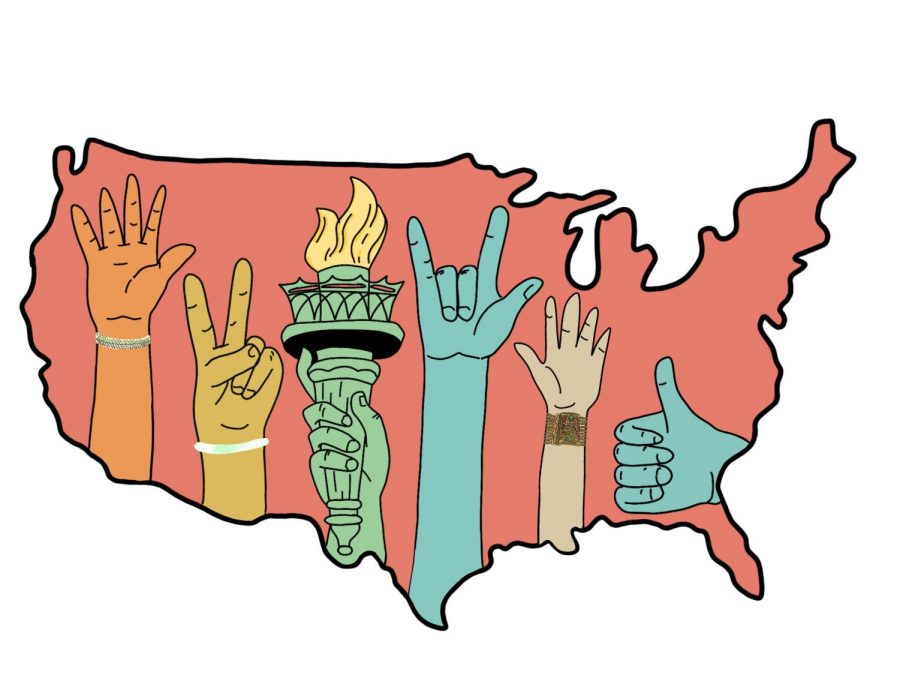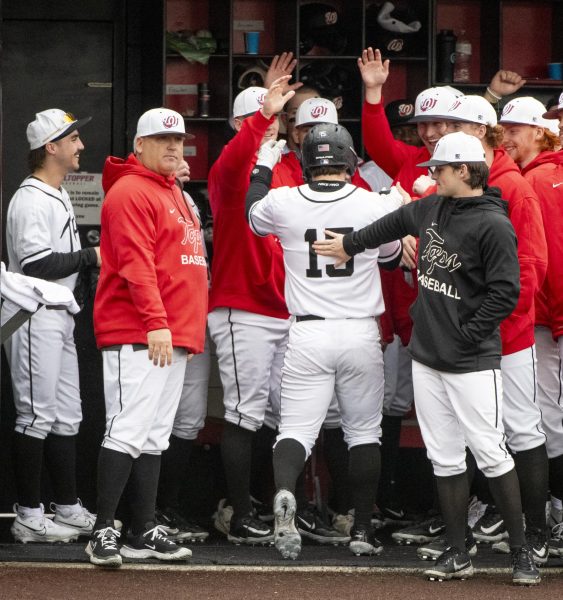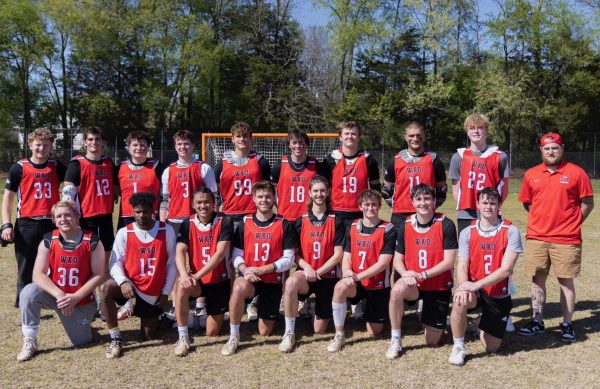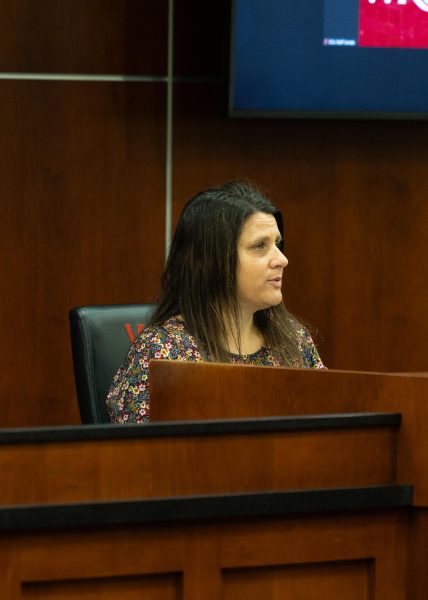Finding a new home
The United States immigration process
After roughly six months in a refugee camp near the Thailand and Myanmar border, 19-year-old Tee Mo and her family, her husband Lureh and her 3-year-old, were accepted into the United States.
While in the camp, a place she said was restrictive and sometimes frightening, she and her husband applied to emigrate to the U.S. They first landed in Houston, Texas, before moving to Owensboro then Bowling Green.
Mo said it was scary coming to the U.S., a place where she didn’t have a job, couldn’t speak the language and had no connections, but she is grateful to be in America.
“I didn’t know anybody here,” Mo said. “But we’re thankful because we are here. We have a safe place.”
Mo is just one of the roughly 2,200 immigrants and refugees that arrive in the United States daily, according to the Population Reference Bureau. With that many new immigrants coming to America, each with their own unique situation and needs, the process is understandably complex.
According to resources provided by the U.S. government, there are multiple types of visas one must obtain that depends on a person’s “reason for travel.”
These include an immigrant visa, both family-based and employer-based, used for permanent residency in the United States, a visitor or business visa, a student visa, a transit visa, a business or professional visa for citizens of Canada and Mexico and a “Fiancé visa” to marry your U.S. citizen fiancé, and live in the U.S.
“When you arrive in the United States, you must show valid travel documents as part of the entry process,” the government website states. “The documents you need and whether your passport needs to be valid for six months after your travel dates depend on the country you are arriving from and your citizenship or status.”

Along with the other visas, there are also people who come to America who are considered refugees, like Tee Mo and her family. A refugee, for the purposes of the government, “are people who fled their homes for a variety of reasons, including persecution (or the fear of persecution) and war, to find protection elsewhere.”
“The refugees’ entry process into the U.S. involves many government agencies as part of the U.S. Refugee Admissions Program, which explains the resettlement and a refugee’s arrival,” the website states.
The key difference between an immigrant and a refugee is their departure from their home country. An immigrant leaves freely for a variety of reasons including the hope for a better life while a refugee is forced to leave based on persecution, natural disasters, war or a “well founded” fear of such things happening if they returned to their home country, according to the U.S. Citizenship and Immigration Services.
Regardless of a person’s reason for immigrating to the United States, the process is time-consuming. Mo said her entire process of coming to the U.S. took roughly 10 years, but she knew of some that stayed at the camp for 15 to 30 years waiting to immigrate to another country.
Boundless Immigration, a corporation aimed at making the process less stressful, faster and more affordable, states that while the length can vary depending on external factors as well as the type of visa one is requesting, the entire process can take up to three years.
In addition to the multiple visas available to immigrants, there are also Green Cards that offer more flexibility to individuals and grant them the same rights as natural-born U.S. citizens. The main difference between the two is “that US visas allow the bearer to enter the country and stay for a certain period of time for a specific purpose, while a Green Card is a permit for immigrants that grants permanent residency in the United States,” according to Handy Visas.
Unlike visas, a Green Card can only be applied for after entering the U.S.
“About a million people a year receive Green Cards, designating them as new permanent residents of the United States,” the U.S. immigration website states. “Many of those people arrive in the U.S. through an immigrant visa.”
As with most things, immigration has been a political issue for decades. Illegal immigration, coming into the country without going through the process, is seen by Americans as a national security issue, according to the U.S. Council on Foreign Relations. This has led some politicians to focus on deportation and an increase in border security and others to making the process easier and quicker.
At the state level, legislatures vary widely on their tactics and stances towards immigration. California allows undocumented immigrants to apply for driver’s licenses while Arizona allows police to question anyone suspected of being in the country illegally.
“The federal government is generally responsible for enforcing immigration laws, but it delegates some immigration-related duties to state and local law enforcement,” the U.S. CFR states.
The differences in policy from state to state make the immigration process difficult and complicated, but can be navigated.
According to Jeff Meisel, Bowling Green city manager, the city has thrived as immigrants come into Bowling Green and establish businesses that invigorate the community.
Dan Ridenour, mayor of Muncie, Indiana, echoed Mo’s remarks that it “takes a lot of courage” and requires strength of character for a person to leave their home country and start anew.
“It’s overwhelming,” Jeff Meisel, Bowling Green city manager, said in an interview with Ball State University. “Think about all the challenges assimilating to that new environment, that new culture.”
Just as each person is unique, so are their reasons for immigrating to the U.S. Some come willingly in search of a better life, both for themselves and their children, others are forced to flee from their countries for fear of violence or death, like Tee Mo or any of the various Bosnian immigrants.
The 2020 census records roughly 45 million people who are foreign born in the U.S. These people do not cluster in one area but rather spread to every corner of the nation.

According to the same census, the Commonwealth of Kentucky has over 180,000 foreign-born individuals. Perhaps surprisingly, the city of Bowling Green, with 9,162 foreign born people, seems to be high on their list of nice places to settle down.
Dominique Gumirakiza, associate professor of agricultural economics at Western Kentucky University, who volunteers his time helping Rwandan immigrants in the city, said there were multiple reasons this city appealed to the Rwandan community, including the city’s proximity to the interstate and the numerous job options available.
Gumirakiza said the Rwandan community in the city has grown from ten to roughly 50 families.
Most Rwandan immigrants do not speak English or rather speak it as their second language, Gumirakiza said. Most speak Kinyarwanda, their native tongue, so he and his wife spend around eight to ten hours a week helping translate documents, schedule doctors appointments and connect them to resources.
The city government also offers no shortage of resources to the immigrant and refugee community.
Leyda Becker, the International Communities Liaison for the city, said her position was initially assigned to a police officer but after “extensive information gathering” made it a full-time position serving all city departments.
“[T]he role was meant to be city services to assist all city governmental departments,” Becker said. “And that’s why it was created.”
Becker said it is not uncommon for her office to have between 800 and 1,000 “contacts” in the span of a month from people needing assistance for things like how to reach the police or utilities department or when to put out their trash for pickup.
The liaison’s department also offers a variety of programs both for the immigrants and educational opportunities for the people of Bowling Green, like Language Access Services which “ensures that limited English proficient constituents have equal access” to written or spoken materials through interpretations.
The city also has the Academy for New Americans that aims to “empower New Americans to understand and participate in city government.”

In addition to the in-person events the liaison offers, she also hosts a weekly show on “La Nuestra,” a Spanish radio program, about city services and important city information.
Bowling Green is also home to the International Center of Kentucky, a refugee resettlement agency started by Marty Deputy in 1981. To date, the Center has assisted in the resettlement of over 10,000 refugees.
Meisel said that while the government and the Center do a lot of helpful things, it is individuals, the schools, the churches and neighborhoods that play a big part in making Bowling Green feel like home.
Tee Mo now has a job working at Christ Fellowship Church by the Parker-Bennett-Curry Elementary school where she, among other things, helps refugees and immigrants with things like transportation, English and schooling.
Mo said the first year in a new country is typically the most difficult due to the language barrier and the transportation, so she is glad to be able to help.
“[The] first year in America was difficult for my family,” Mo said. “We didn’t have job[s], we also did not have enough food to eat for three months […] So, difficult not only for our family but also [for] families [who are] like our family.”
In the end, the immigration process can be daunting. It takes a copious amount of time and energy and it can be quite scary moving to a foreign country, but Mo said she is grateful to live in Bowling Green.
“We support each other,” Meisel said. “We’re here to serve them.”
Administration reporter Michael Crimmins can be reached at [email protected].












